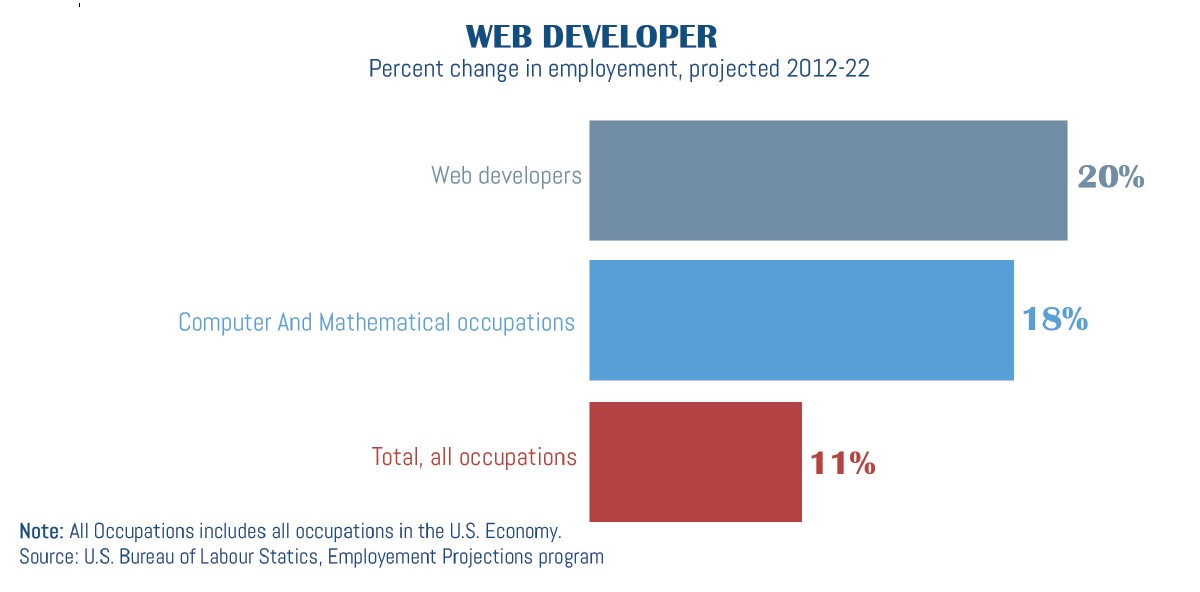Creating A Mobile Development Strategy
Make your strategy scalable by developing secure mobile applications.
The Smartphone industry has seen an outstanding surge in sales over the past few years and one which shows no signs of receding in the foreseeable future. with the increase in usage of mobile phones, the requirement of having an mobile-online presence is becoming inevitable for companies to reach their customers. But to make this investment efficient, companies need to create a mobile strategy that will get them into the mobile market quickly, and provide a scalable plan for the future.
According to the Recent Survey:
“64% of American adults now own a smartphone of some kind, up from 35% in the spring of 2011.15% of Americans ages 18-29 are heavily dependent on a smartphone for online access and the percentage is increasing fast.”- PEW Research Center
“The number of smartphone users worldwide will surpass 2 billion in 2016, representing over a quarter of the global population. This number is expected to grow to more than 2.56 billion people or a third of the world population.” - eMarketer
Most businesses are aware of the necessity of rendering their business available on mobile internet platforms. The hurdle is they do not know how to do that as they are used to a certain modus operandi that has been made almost extinct due to this transformation. Many often fail to provide the correct strategy which do not fulfill their mobile needs and demands. There are several factors that need to be kept in mind while designing a mobile strategy. Below are few pointers that would help formulate a strategy:
Establish mobile objectives:
For a mobile strategy to be successful, objectives should help achieve company’s overall business goals. So, define mobile objectives that are aligned to the business strategy to avoid the risk of leaving mobile initiatives as a mere ‘check-offs’.
Prioritizing platform:
Unlike desktop applications, mobile development has a complexity of development in multiple platforms. Today there are multiple Operating Systems and device types catering to the mobile needs. While there are popular devices like iPhone, which cannot be ignored while designing a platform based on its market share. There are many other devices in the market which can be strategically chosen based on type of business. For example, Restaurant, Travel and Automobile companies may opt for smart phone devices at the top of their priority list while publishers can go with iPad or Android tablet implementation next, as the larger screen lends itself a better user experience.
Launch with Feature rich vs Progressively adding features after launch:
Once an app is developed, testing it for bugs and other anomalies prior to the release is paramount for its success, and it’s very survival in the cut-throat competitive app market it would be introduced in. If an app that has amazing features which entice people on a large scale fails to function efficiently over sustained period of time, people will eventually get frustrated and quit using the app which would naturally result to a terrible ROI.
Advanced features and updates can later be rolled out consistently as upgrades but a compromise on efficient functioning in order to accommodate high-end features is a bargain that doesn’t reap profit. However, another perspective is that if the features are really too good to resist and a little lesser app efficiency would just mean taking a weak punch in the strong area, then the risk becomes worth taking.

Evaluating technical resources:
The tendency is to outsource a mobile development project which brings the advantage of giving focus to marketing. But in cases of developing same app for multiple devices by multiple teams, there is risk of losing control. Also, the outsourced team may consume some time in understanding your business. So, better approach would be to make use of in-house developers who has wealth of knowledge on your business, products and customers with a mixture of outsourced developers who has specialized technical skills in mobile development.
Choosing a scalable technology:
Weather we are planning to develop the application for a single device or multiple devices initially, it would be a good strategy to plan for an architecture that can be scaled to multiple devices with minimal efforts. Infact, mobility is not merely about the good design and development of an app. Rather its flexible mobile architecture design and implementation is most important part of the strategy.
A good scalable architecture should:
• Deliver the best user experience possible across all platforms.
• Enable firms in deployment of Mobile applications across several operating systems and platforms, in order to reuse as much code as possible.
• Leverage worth investing in web development.
Identify all potential use cases:
Developing a strategy for mobility is more of investing in Mobility by addressing key aspects such as Employee-facing initiatives, customer engagement, partners, connected devices, and so on. This impacts the growth of your business, leaving no stone unturned.
Use APIs to deliver a seamless user experience:
Application Programming Interfaces (APIs) encapsulate back-end information systems, allowing them to be leveraged by front-end mobile applications for entirely new uses. Creating APIs is one of the fundamental element of a mobile app strategy to get an enterprise’s massive amounts of data into a usable framework on a mobile device.
Also APIs open up enterprise resources to multi-platforms developers. Companies no longer have to develop their own mobile apps. Also APIs are now being increasingly used to make data and information available to mobile and web applications, connected devices, and enterprise applications.
Incorporate the customer perspective:
Mobility is huge and many business leaders believe that they know better ideas to attract customers. As developing innovative ideas is critical, many fail to identify valuable ideas leaving their targeted customers. So it is highly recommended to incorporate the discovery and design process from the start based on customer’s perspective.
Social Media integration:
It goes without saying that customer engagement on social media is a necessity for businesses in this age. This means that businesses will have to interact in a much more direct manner which is satisfactory to the customer. In order to be able to make the right decisions, it is imperative for businesses to know what customers need. Listening raptly to the hum on social media platforms gives businesses a perspective of what must be the next step and which would be the right direction for that step to be put in. This phenomenon, which is being deemed as Social Media Intelligence, is an extremely powerful asset if leveraged adequately and a grave mistake that costs dearly if ignored as unimportant.
Don’t miss innovative ideas:
Today, based on the immediate pressing needs many companies are focusing on low-hanging fruit – most easily achieved and cheap to deploy tasks. These short quick wins might help in reaping maximum value, but truly innovative and transformative concepts can often suffer as a consequence. Developing innovative solutions with Mobility Innovation Lab, can help gain a comprehensive understanding of the mobility systems of tomorrow.
Create an integrated roadmap:
Your final mobile roadmap shouldn’t just be about your mobile apps. It should integrate the associated IT, architecture, governance, security, and analytics dependencies.





